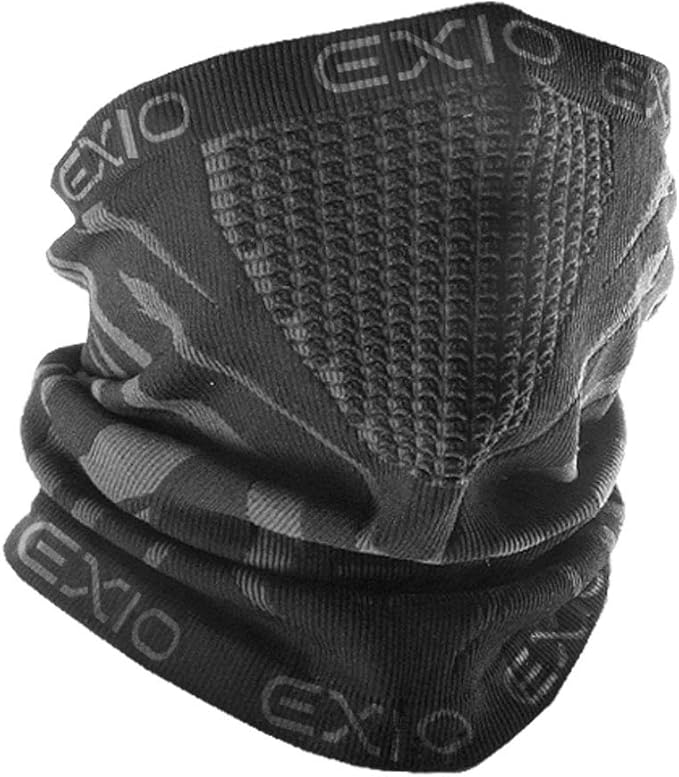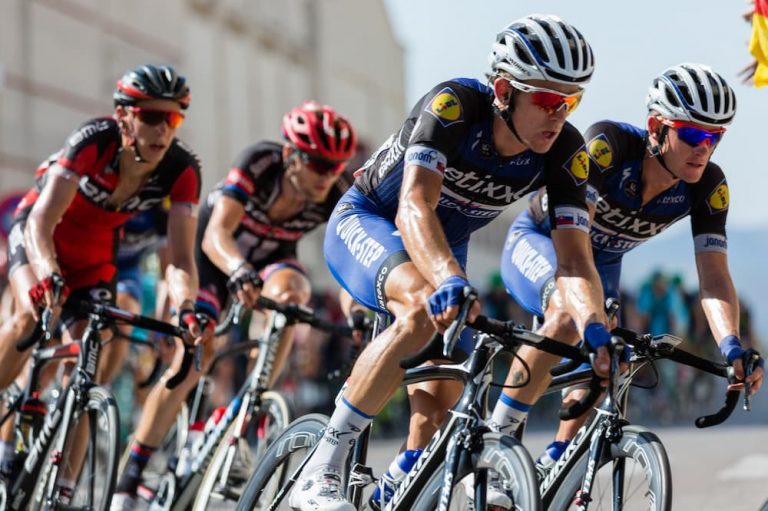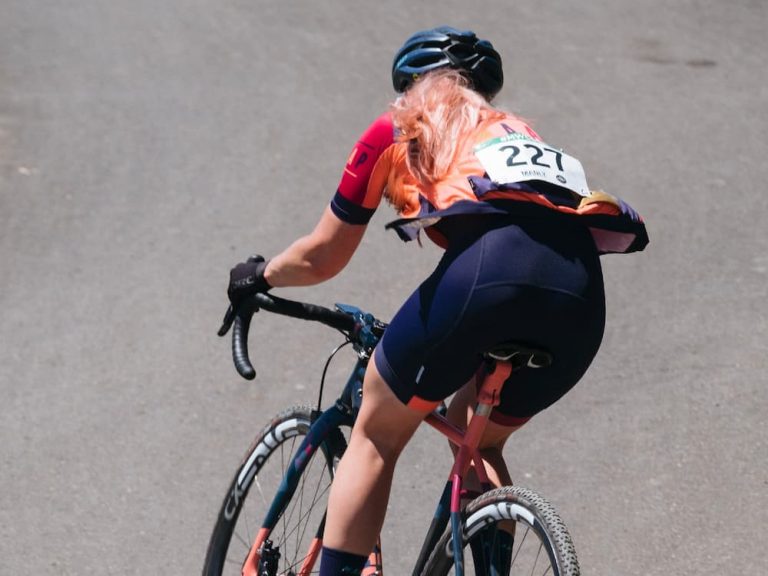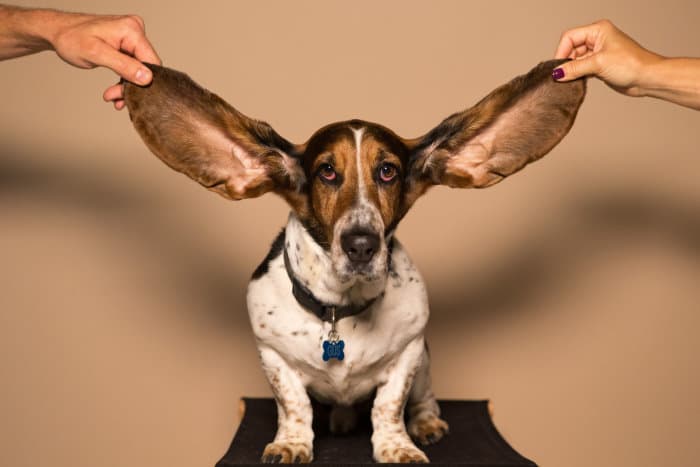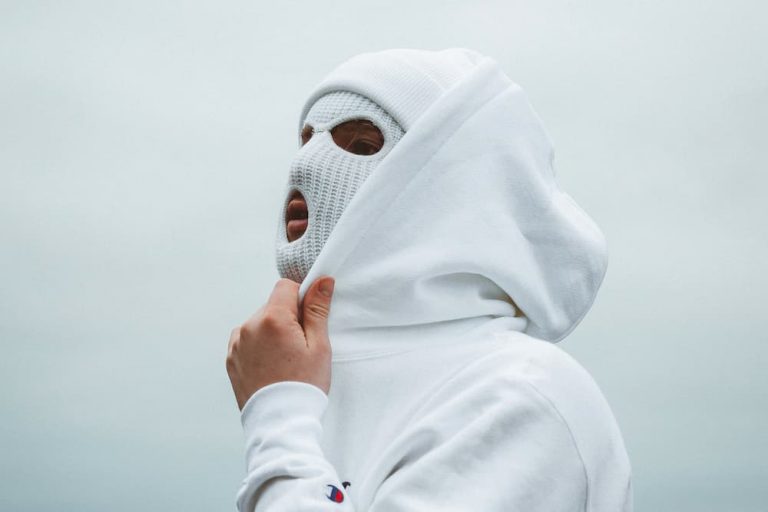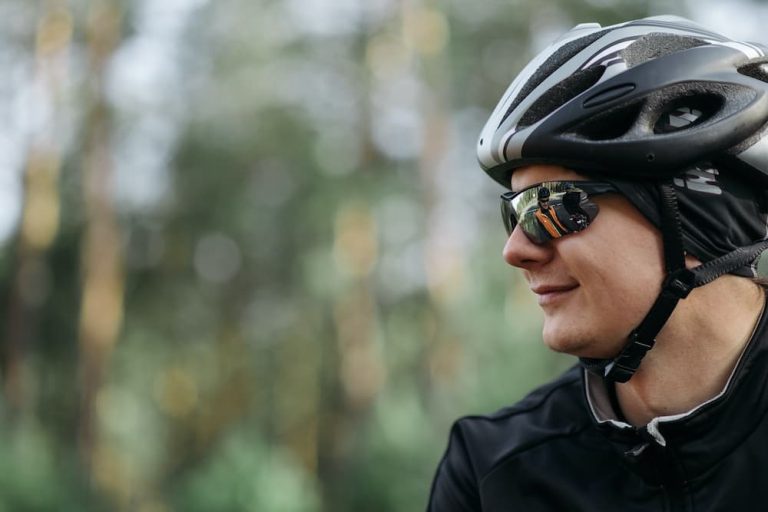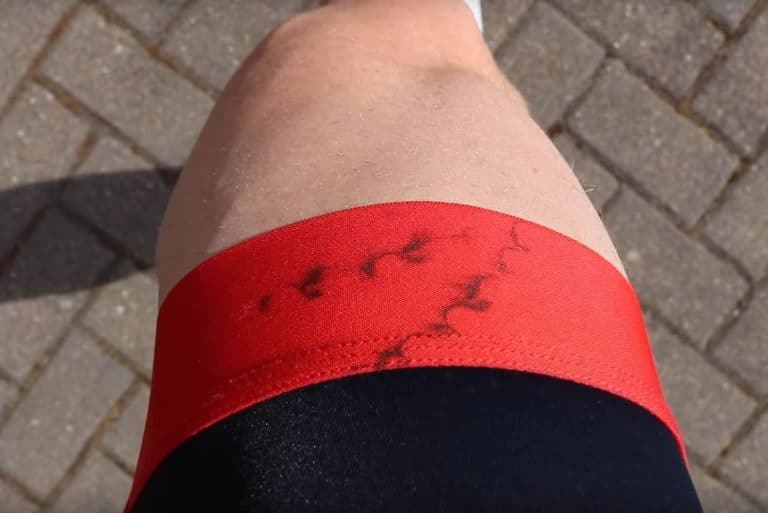How To Keep Ears Warm When Cycling In The Cold Season
Wondering about the best way to keep your ears warm while cycling in cold weather? This question becomes crucial as we prepare for the colder months.
Fall is already here, and winter is fast approaching. The air has become chilly and brisk, a favorite time for many cyclists. Winter brings an even greater charm to cycling, offering a beautiful backdrop for outdoor activities.
The chilly mornings are adorned with a shimmering frost, the sun peers through a veil of mist, offering a serene ambiance, the sky displays a crisp and calming tone, and the air feels invigoratingly brisk. While others prefer spending their winter mornings wrapped up in a blanket, staying cozy, cyclists seize every opportunity to follow the wind and navigate their favorite paths.
However, this idyllic image quickly fades when the cold starts to bite, particularly at the ears, especially when you’re battling against the wind. Staying warm is vital for winter cycling, and that’s obvious. Yet, no matter how well you bundle up, the ears always seem to suffer from the cold and discomfort. That’s why finding effective cold-weather gear to prevent your ears from getting too cold is crucial for winter rides.
The ears require special attention to prevent them from freezing. There are various methods to keep your ears warm while cycling in winter. Most people opt for a beanie or a balaclava as a quick fix.
Based on your location and the severity of the cold, there are various options to stay insulated. Make sure to prepare adequately before setting out, ensuring your ears stay warm and comfortable on every ride, whether it’s a daily commute, a mountain biking trail, or a pump track. Staying warm on the trail begins with protecting your ears.
As an Amazon Associate I earn from qualifying purchases made through links in this post at no extra cost to you.
Accessories That Will Keep Your Ears Warm
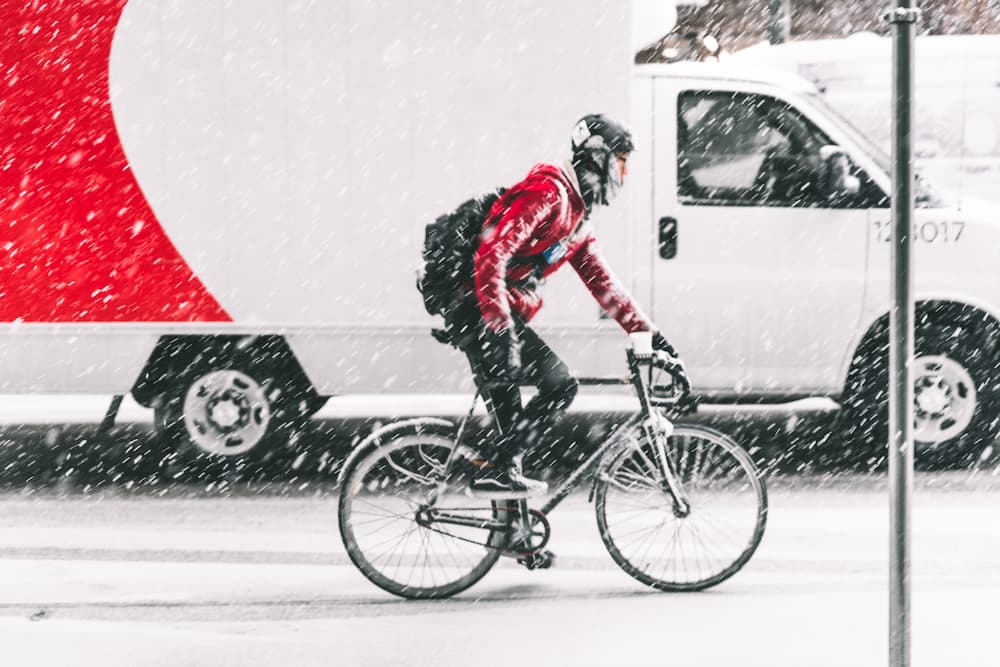
Check out these clothing accessories I have reviewed below and choose what you like:
- earmuffs
- headbands and ear warmers
- skull cap or helmet liner
- beanie
- neck gaiter
- balaclava
- trooper hat
- helmet cover
These are the ultimate products that will answer your question – how to keep ears warm when riding a bike?
Earmuffs
Talonite Winter Ear Muffs for Men – Foldable Fleece Ear WarmersCHECK CURRENT PRICE
If you still think earmuffs are for little girls in Christmas movies, you need to check out the stores! They are no longer only made with pink wool and faux fur; there are many different styles of earmuffs for many different purposes. Plus, these are a great choice for biking during the winter. They only cover your ears and don’t get in the way of your helmet.
For instance, these Talonite Winter Ear Muffs are a great choice for cycling when it’s mild to moderately cold outside. They are made of a soft fleece fabric that covers the ears perfectly and keeps them warm and crisp. They can be easily folded and stuffed in your jacket pocket when you are heated up from the intense shredding. Most importantly, you put them on your neck, keeping them out of the way of your helmet.
This cycling ear warmer is best used when it’s not too cold outside at the start of winter. It is equally great for commuting and trail riding. They don’t prevent road noises, so you are safe on the street.
Pros
- Many colors to choose from
- Only covers the ears
- Great for all-purpose cycling.
Cons
- Can’t be used all winter round or during severely cold weather
Headbands and Ear Warmers
The Friendly Swede Ear Warmer Headband for Women and MenCHECK CURRENT PRICE
How to keep your ears warm when cycling? A headband or ear warmer is the first thing that comes to mind when you think of keeping your ears warm during the winter. Using ear warmer while cycling is effective as they do not interfere with your helmet.
You can easily adjust these ears warmer to fit your comfort, like pulling them beneath the helmet on the back, covering your ears, and lifting them up at the front to keep them inside the rim of your helmet. They are popular for biking because they keep brow sweat from dripping all over your face.
The Friendly Swede running headband ear warmers are a great choice for maintaining warmth on your ears during cycling in the winter. They are purposely designed to rest on the forehead and keep the comfort of your ears. There are different options from this brand of cycling ear warmer to choose from based on how cold it is out there. You can get a regular headband for moderately chilly weather or a fleece one for colder weather. They also have one with a reflective exterior that gives you extra visibility in the dark to prevent any crashes and makes these night rides safer and more fun.
Using these ear warmers while cycling is great for cycling throughout the whole winter. They are especially effective for workout cycling or racing. They come in different thicknesses and weights depending on the temperature. You can use the light thin ones for commuting or motorbiking or the thick fleece ones on mountain or downhill trails during heavy winters.
Read more: Best Ear Warmers For Cyclists
Pros
- Stay firm on your forehead and ears and do not fall off easily.
- Can be used for keeping warm through the entire winter.
- Keeps your ears warm for the whole time.
Cons
- Needs regular wash since it absorbs a lot of sweat.
Skull Cap or Helmet Liner
BALEAF Thermal Cycling Cap Under Helmet Liner Skull Cap with Ear CoverCHECK CURRENT PRICE
No, these are not caps made out of skulls like some Viking death metal album. Imagine swimming caps but for dry land. During the coldest days, you need the whole package. Something that can maintain warmth for not just the ears, but the entire head. This is a thin elastic cap that covers the whole head and goes on down to the ears to provide perfect warmth and keep you fresh and toasty throughout the entire ride. Like headbands, they also keep the brow sweat from dribbling over your face and they fit perfectly under the helmet. They also keep the hair neat under the helmet and prevent it from getting ruined by the air and sweat.
The BALEAF thermal cycling cap is a fine choice for winter cycling. It is made from a fleece fabric that keeps the ears and the head perfectly warm in cold misty mornings. The fleece interior provides warm comfort and the seam is stitched with reflective material to give you extra visibility in the dark. It also has a hole in the back if you have long hair.
Skull caps are the perfect choice for professional cycling during cold season or any other winter sport. They are best used to preserve the warm of rider’s head and ears on downhill or cross country mountain biking trails or cycling marathons through a long route.
Pros
- Keeps the entire head, including the ears warm, biking in the cold becomes completely safe.
- Does not get in the way of the helmet.
- Absorbs sweat and keeps it from dribbling.
- Does not prevent street noises.
Cons
- Obstructs ventilation on the head.
- It might get too hot on long and intense rides.
Beanie
MERIWOOL Unisex Merino Wool Cuff Beanie HatCHECK CURRENT PRICE
No one can deny the good comfort of a soft and mushy beanie on a winter morning. This is a thicker version of skull caps. Hell, if it were possible, anyone would wear one all year round. For cycling, it is no different. A well-knitted beanie is a great way to keep your ears warm on a morning ride, and the amount of comfort they can provide needs no description.
How to keep your ears warm while cycling? It does not matter if you are cycling to work, going out for a refreshing ride, or about to shred at your local bike park, don’t forget to wear your beanie to keep warm air flowing and keep your ears toasty.
The MERIWOOL unisex merino wool cuff beanie is pretty good for the ears on morning cycling routines. They are thick enough to maintain warm air within but not too thick to get in the way of your helmet. It is made from an ultra-soft itch-free fabric to provide ultimate comfort so that you keep pushing on your bike without worrying about getting too heated up.
These beanies can be used throughout the entire winter, be it the coldest days or just chilly and windy days, because of the adapting clothing technology.
Pros
- Seamless and sleek design to fit perfectly under the helmet.
- Prevent you from getting too cold or too hot.
- Moisture absorbent.
Cons
- Not very elastic. Can grip tightly around a larger head.
Neck Gaiter with Ear Covers
EXIO Winter Neck Warmer Gaiter/BalaclavaCHECK CURRENT PRICE
When you’re out there racing against the wind, shredding down a steep slope on a crisp winter morning, it’s not just your ears that feel frozen and stiff. How to warm your ears while cycling in such situations? It is everything that is not covered by your helmet, also known as your entire face.
Sadly, you can’t bring your blanket or duvet along on a ride and scarfs don’t exactly offer much protection. This is where neck gaiters come in. you just simply wrap it over your face and attach the Velcro at the back of your head, and there you go. When cycling out on your favorite route, your face is protected against the sharp icy winter air. Get a neck gaiter that reaches up to your ears, and nothing can stop you anymore.
The Exio neck gaiter is designed with cyclists’ winter comfort in mind. It is a crafty piece that reaches up to your ears and attaches securely at the back of your head. It is made of comfortable, skin-friendly, fleece fabric so that your ears and face remain warm and toasty whenever you’re cycling or motorcycling.
These gaiters are best used for windy days. Cold winter mornings or stormy weather when you must keep your face and ears warm and protected while cycling or motorcycling.
Pros
- Full face and ear protection.
- Equally good for riding bicycle, mountain bike, or motorbike
Cons
- Might be irritable for anyone with breathing issues or asthma.
Read more: Best Cycling Neck Gaiter Reviews
Balaclava
Balaclava Ski Mask – Winter Face Mask for Men & WomenCHECK CURRENT PRICE
If you are a cyclist, you already have the speed, skills, and precision of an ancient warrior. So why not look the part and beat the cold winter air like the ninja you are? That’s right, a balaclava is a very effective way to gear up for the winter ride, especially for winter morning rides as they not only cover your ears or face but everything that stands on your shoulders. It keeps ears warm and saves you from the cold.
Well except the eyes of course but you have your goggles for that. On top of that, they are well adjusted with the helmet, and together they give you the best winter protection during cycling. And yes, they make you look like a ninja.
The Tough Headwear Balaclava is the ultimate winter protection for cyclists during winter rides. It holds the warm air inside and keeps your ears warm and the rest of your face too through even the coldest rides on snowy forests or mountain trails.
The tough headwear balaclava is best used at the coldest times of the year. They offer ultimate protection against the cold, wind, or snow. They are great for snowy terrains and stormy weather.
Pros
- Good protection against rough weather and cold wind.
- Does not get in the way of the helmet.
Cons
- It might feel like a little too tight wrap for some people.
- Takes a little effort to take off.
Read more: Best Cycling Balaclava Reviews
Trooper or Trapper Hat
Solid Buffalo Plaid Aviator Trapper HatCHECK CURRENT PRICE
Nothing beats a good old trooper hat when it comes to staying warm in a very cold winter. If it can warm your ears on camping trips and chopping trees, it can keep the ears warm while cycling too. A good trooper hat wraps up on your head tightly and secures firmly under your chin. It will block all the icy cold air and keep your ears warm while you’re cycling hard and pushing the limits.
The Kbethos Buffalo Plaid Trapper is great for cycling as it has a soft and thick fur lining on the interior which traps the warm air and keeps the ears toasty but also a thin and soft exterior so that you can fit your helmet on top of it.
It is best for hard and cold winter days and especially effective if you bike on snowy terrain where it stays mostly below the freezing point.
Pros
- Provides padded warmth trapping protection against the cold wind.
- Great value for money.
Cons
- Might not be compatible with helmets
Helmet Cover
veloToze Cycling Helmet CoverCHECK CURRENT PRICE
You’re all prepared, fully covered up, have your ears warm, cycling in the morning. But for some reason, you still feel cold. That is because biking helmets have lots of slits and holes to maintain ventilation. On cold days, these openings let cold air in and spoil all your effort on staying warm on the trail. they also allow dew to gather on your hair and scalp leaving you cold despite your best efforts on keeping warm. Therefore, a good helmet cover is a great way to prevent cold air from getting under your scalp. It may not be a cycling ear warmer, but a helmet cover certainly helps you keep warm. After all, winter cycling’s most important factor is warmth.
The Velotoze Cycling Helmet Cover can be very handy during winter rides. It is made from a lightweight, waterproof and windproof material that keeps the head warm during rainy or cold days. it is very aerodynamic and flexible. A great choice on cycling trails, or mountain biking.
Pros
- Keeps the head warm and the helmet clean and dry.
- Many colors to choose from.
Cons
- Needs to be cleaned frequently.
Read more: Best Winter Bike Helmet Reviews
Frequently Asked Questions
Can you wear a beanie under a bike helmet?
Yes, you can. There are many beanies that are made to be worn under a bike helmet. Make sure you get a close-fitted and lightweight beanie that is not too thick and you’ll keep your ears warm. If your beanie is a little too thick then you’ll have to adjust the helmet a little bit to suit your comfort and hopefully, you’ll be ready to shred on your bike.
What temperature is too cold for cycling?
Riding in below-freezing temperatures is not particularly dangerous. It mostly depends on preference. But if it’s anywhere under 50 degrees, then get extra ear protection.
Why is it important to keep ears warm?
Keeping your ears warm and dry during the winter is essential for healthy hearing. Cold and wet ears can cause numerous infections and ultimately affect your hearing. We usually see a rise in ear infections during winter. Cycling without proper ear protection may even cause a ‘surfer’s ear.’
Final Words
As my exploration of keeping ears warm during cold-weather cycling concludes, I can’t help but reflect on the myriad of options available to riders.
From the basic but effective earmuffs to the comprehensive coverage of a balaclava, each accessory offers its unique blend of comfort and protection. My personal experiences echo the article’s insights – proper ear warmth is a comfort issue and a health necessity. Rapid winds and icy air are more than mere discomforts; they pose real risks to our ears, especially at high cycling speeds.
I’ve come to appreciate that winter cycling requires a careful balance. It’s about enjoying the serene beauty of frost-laden mornings without compromising on safety and comfort. The right ear-warming gear makes this balance achievable. Whether opting for a snug beanie or a versatile neck gaiter, each choice has its place depending on the ride’s intensity and the day’s chill.
My recommendation? Experiment with different options. Just as we adapt our cycling techniques to the terrain, so must we adapt our gear to the weather and temperature. The key is understanding that your ears are as vital as any other part of your cycling equipment.
So next time you prepare for a chilly ride, realize that protecting your ears is about safeguarding your cycling comfort against the harshness of winter.
Related Articles





